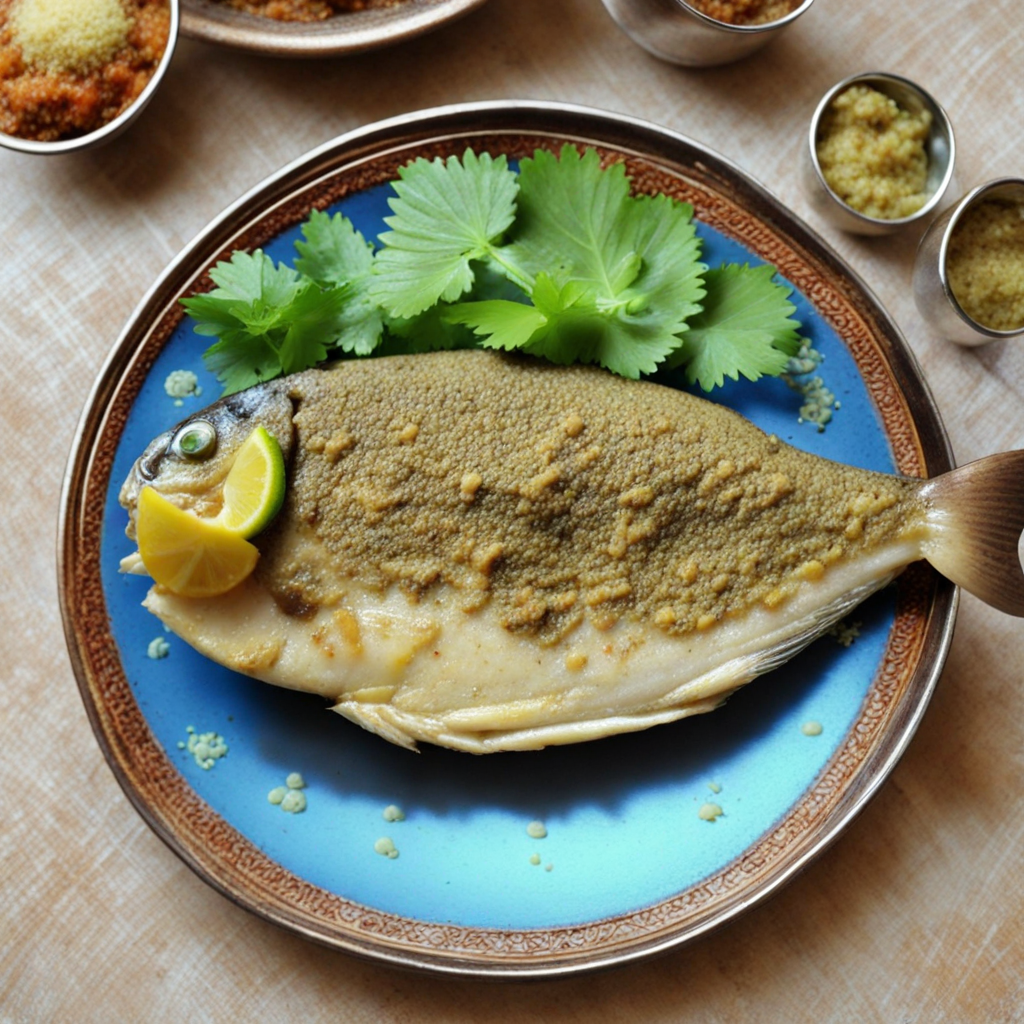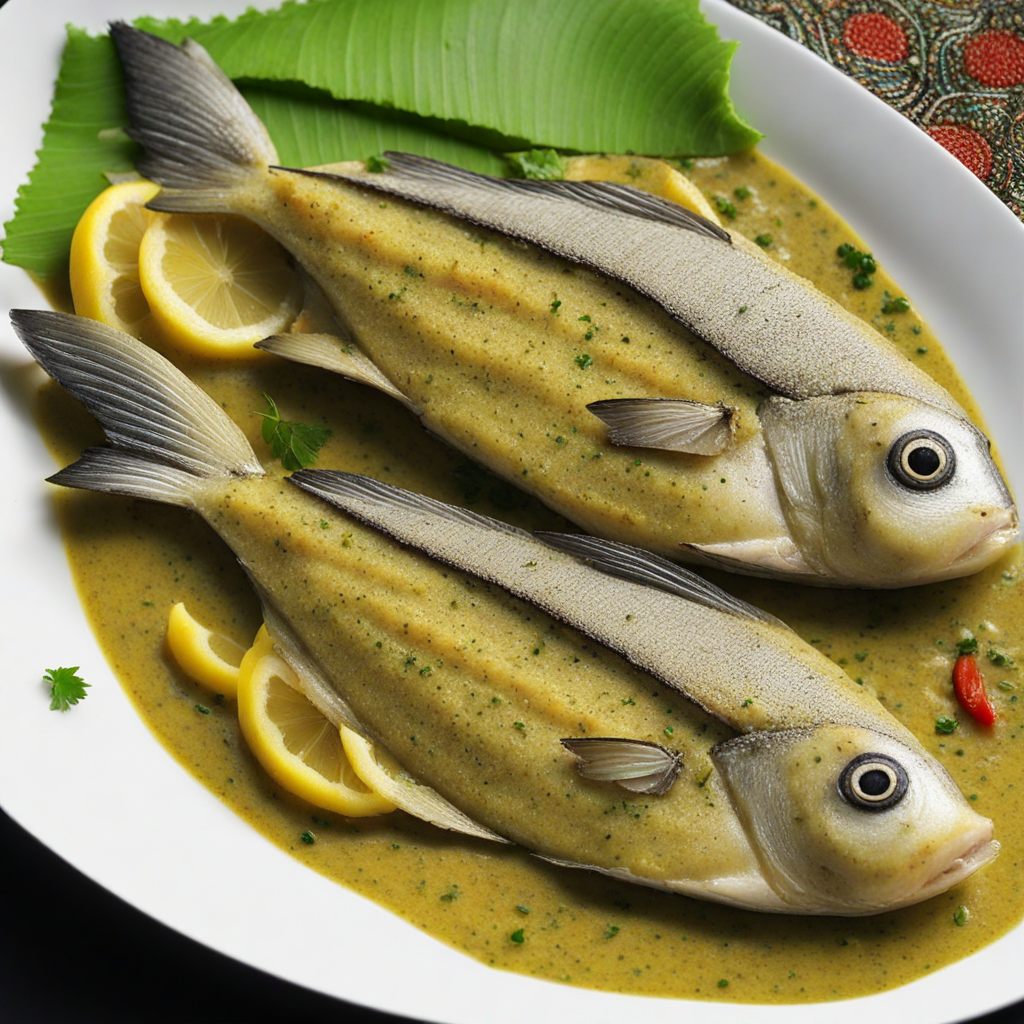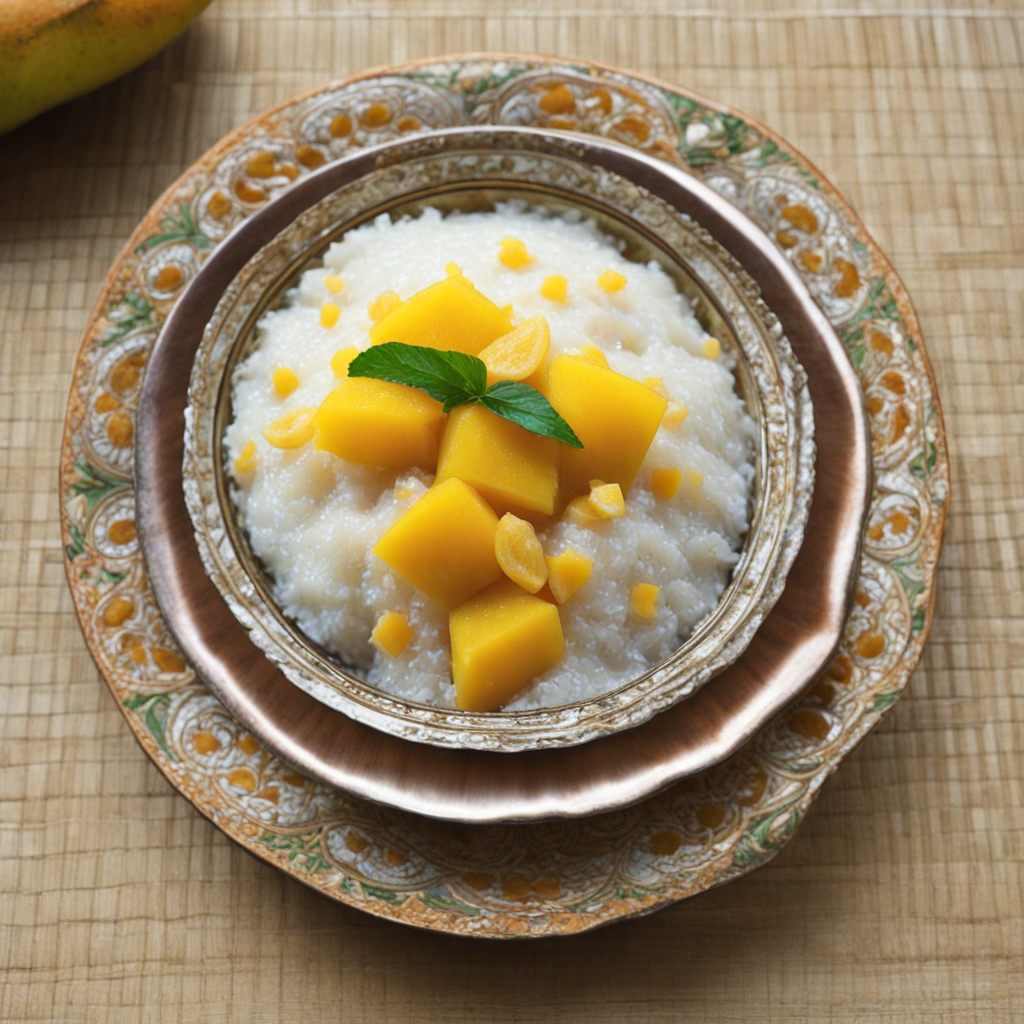Shorshe Ilish
Shorshe Ilish is a quintessential dish from Bangladesh that showcases the country’s love for bold flavors and fresh ingredients. At its core, this dish features Ilish, also known as Hilsa fish, which is revered for its rich, buttery texture and unique taste. The fish is typically marinated in a paste made from mustard seeds, which gives it a distinctive tangy flavor. The mustard, often combined with green chilies and a pinch of turmeric, not only adds depth to the dish but also enhances the natural taste of the Ilish. This combination creates a vibrant yellow sauce that clings to the fish, making every bite a delightful burst of flavor. The cooking process of Shorshe Ilish is as important as the ingredients themselves. The marinated fish is gently simmered in mustard oil, which contributes a fragrant aroma and a slightly nutty taste, elevating the overall experience. It is often cooked in a traditional pot, allowing the fish to absorb the spices and the mustard oil fully. The dish is typically served with steamed white rice, which balances the richness of the fish and sauce, making it a perfect accompaniment. The contrasting textures of the tender fish and the creamy mustard sauce create a harmonious dish that is both comforting and indulgent. In addition to its delightful taste, Shorshe Ilish is a celebration of Bengali culinary heritage. It is often enjoyed during special occasions and family gatherings, making it a dish that holds sentimental value for many. The combination of flavors and the ritual of sharing this meal create a sense of community and connection among those who partake in it. For anyone looking to explore the vibrant and diverse world of Bangladeshi cuisine, Shorshe Ilish promises to be an unforgettable experience that captures the essence of the region's rich culinary traditions.
How It Became This Dish
The Culinary Symphony of Sorshe Ilish: A Taste of Bangladesh Introduction Sorshe Ilish, a quintessential dish from Bangladesh, is much more than just a culinary delight; it is a cultural emblem that embodies the rich heritage and traditions of the Bengali people. This dish, made from hilsa fish (Ilish machh) and mustard (sorshe), has become a staple in Bengali households, especially during the monsoon season. Its origins, cultural significance, and evolution over time reveal a fascinating story that links food with identity, environment, and history. The Origins of Sorshe Ilish The hilsa fish, known for its distinctive flavor and tender texture, has long been revered in Bengali culture. The fish is believed to have originated in the rivers of South Asia, particularly the Ganges and Brahmaputra river basins. Archaeological findings suggest that fishing practices in this region date back to ancient times, with evidence of hilsa being consumed as early as 400 BC. The preparation of Sorshe Ilish likely emerged in the Bengal delta, where the confluence of rivers creates a rich ecosystem for this prized fish. The use of mustard seeds in cooking is also deeply rooted in Bengali cuisine, varying from dry mustard powder to the green mustard leaves used in many traditional dishes. The combination of hilsa fish with mustard, particularly in the form of a paste, is thought to have developed over centuries, merging indigenous culinary practices with influences from neighboring regions. Cultural Significance Sorshe Ilish is more than just a dish; it symbolizes the essence of Bengali identity. The hilsa fish is often referred to as the "queen of fish" in Bengal, signifying its royal status in local cuisine. The dish is particularly significant during the monsoon months, which are considered the prime season for hilsa fishing. This seasonal availability creates a sense of anticipation and celebration among Bengali households, where Sorshe Ilish becomes a ritualistic part of meals. The dish plays a vital role in various cultural practices. It is often served at weddings, festivals, and family gatherings, creating a sense of togetherness and nostalgia. When preparing Sorshe Ilish, families often engage in shared cooking experiences, passing down recipes and techniques from generation to generation. The dish also finds its place in literature and songs, celebrated for its taste and the emotions it evokes. The Culinary Process Making Sorshe Ilish is both an art and a science. The process begins with the careful selection of fresh hilsa, which is typically cleaned and cut into pieces. The mustard seeds are ground into a fine paste, often mixed with green chilies, turmeric, and salt to enhance the flavors. In traditional preparations, the fish pieces are marinated in this mustard mixture, allowing the flavors to seep in. Cooking Sorshe Ilish is an intricate process. Traditionally, it is steamed or cooked in mustard oil, which adds depth to the dish. The fish is delicately placed in a pan, and the mustard paste is spread over it. Water is added to create a steaming environment, allowing the fish to absorb the mustard’s pungency while retaining its moisture. The result is a dish that is both flavorful and aromatic, with the mustard complementing the fish’s natural richness. Evolution Over Time While the essence of Sorshe Ilish has remained constant, the dish has evolved over time due to changing culinary practices, globalization, and modern lifestyles. In the past, Sorshe Ilish was primarily prepared in rural households, where fresh ingredients were readily available. However, with urbanization and the rise of the middle-class population in Bangladesh, the dish has transcended its traditional roots. Today, Sorshe Ilish is commonly prepared in urban kitchens, often seen as a status symbol among the Bengali elite. The dish is not only a staple in homes but is also featured in restaurants, where chefs experiment with variations to attract a modern clientele. For instance, chefs may incorporate elements from other cuisines, introducing spices or techniques that blend traditional Bengali flavors with global influences. The rise of social media has also played a significant role in popularizing Sorshe Ilish. Food bloggers and influencers showcase the dish, sharing recipes and personal anecdotes that connect it to cultural memories. This digital presence has sparked renewed interest in traditional cooking, leading younger generations to rediscover the joys of preparing Sorshe Ilish in their own kitchens. Sorshe Ilish Beyond Bangladesh The popularity of Sorshe Ilish is not confined to Bangladesh alone; it has found a place in the hearts of Bengali communities worldwide. Bangladeshi diaspora in countries like India, the United States, the United Kingdom, and the Middle East often prepare Sorshe Ilish during festivals, family gatherings, and significant celebrations, keeping the tradition alive beyond geographical boundaries. In India, particularly in West Bengal, Sorshe Ilish holds a similar cultural significance, with slight variations in preparation and presentation. The dish has become a symbol of the shared heritage between Bangladesh and India, showcasing the interconnectedness of Bengali culture across borders. Sustainability and Future of Sorshe Ilish In recent years, concerns about overfishing and environmental sustainability have prompted discussions about the future of hilsa fishing. The hilsa population has faced threats due to climate change, pollution, and unsustainable fishing practices. As a response, initiatives have been launched to promote sustainable fishing methods and protect hilsa habitats, ensuring that future generations can continue to enjoy Sorshe Ilish. Furthermore, chefs and home cooks are increasingly exploring alternative sources for hilsa, including farm-raised options or other local fish that can replicate the flavors of the traditional dish. This shift reflects a growing awareness of environmental issues while maintaining the essence of Bengali cuisine. Conclusion Sorshe Ilish is a dish that encapsulates the rich tapestry of Bengali culture, history, and identity. Its origins trace back to ancient times, evolving through the centuries while retaining its significance in contemporary society. As a symbol of celebration, family, and tradition, Sorshe Ilish continues to thrive, adapting to modern influences while remaining a beloved staple in Bengali households. Whether enjoyed on a rainy day or during special occasions, this dish is a testament to the enduring legacy of Bengali culinary heritage and its ability to bring people together across generations.
You may like
Discover local flavors from Bangladesh







